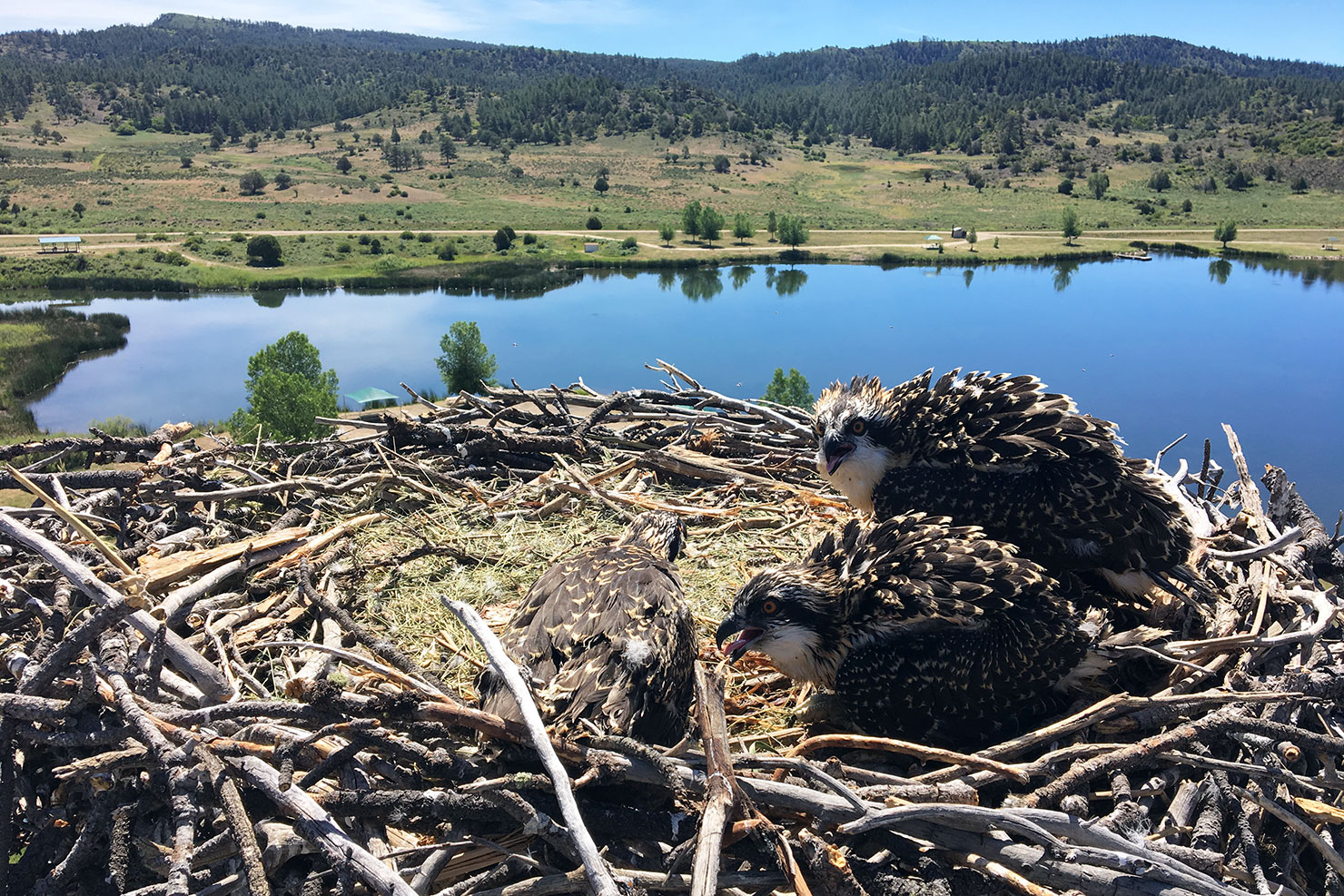The Southern Ute Reservation is home to many seasonal visitors. Deer and elk are migratory species, spending the summers in the high country along Colorado’s Continental Divide, those same herds move south to winter on Southern Ute lands each fall. Many of the bird species found in Southwest Colorado are also migratory. The osprey are no exception.
These birds make an incredible journey into the southern regions of Mexico and beyond. Some have been tracked as far south as Columbia, which geographically defines the northernmost point of South America. A host of other countries that make up Central America and the Caribbean lay in-between. These tropical regions are home to lush forests and an abundance of fresh water lakes and rivers, offering up a variety of fish — the osprey’s principal diet.
“I think throughout North America, ospreys are dialed in to certain locations. I believe there is a lot of consistency,” said Southern Ute Wildlife Division Head Steve Whiteman in regards to the bird’s migration patterns.
On March 18, the female arrived at the nest platform located at Lake Capote, the Wildlife Division’s video feed was at the ready. “Weeks later, a male arrived,” said Southern Ute Wildlife Technician, Jon Broholm. On Monday the first egg was laid and for the next few weeks, there will always be a bird on the nest, Broholm explained. Then, once those chicks hatch, viewers can watch fish being brought to the nest to feed the young. “They are talkative, they are pretty vocal — so the mic is nice,” Broholm added.
The livestreaming video camera has experienced its share of technically difficulties over the years. “We have had intermittent video outages since 2017,” Whiteman explained. Internet signal strength being one of the biggest challenges, which should improve in the near future, assured Whiteman. Adding that Southern Ute Shared Services has been integral to the project, from a technical aspect, as well as Building Maintenance and the Sky Ute Fairgrounds who provide the Skyjacks.
The birds each have two bands. One is a smaller, metal ring. This is stamped with a unique identification number for that bird, and includes contact information. The other larger, plastic band is designed to be readable from a distance and provides a more generalized identification number. “We’ve been banding the kids for the last couple of years,” said Whiteman.
Juveniles disperse and produce offspring of their own. The young birds will fly south, possibly remaining there for a couple of seasons; migrating back only once they have reached sexual maturity. They return to the region they were born, but not the same nest where they hatched.
“Osprey are pretty territorial,” Whiteman explained. “They [typically] mate for life and will protect their nest.” The life span of an osprey can reach twenty years. The male osprey is typically smaller, with an all-white breast. The female birds bear a “necklace” of darker colored feathers.
The osprey are also commonly known as sea hawks, river hawks or fish hawks. Their highly specialized diet is strictly to eat fish. Rarely, when fish aren’t available, will the osprey eat small mammals, birds, or reptiles.
“The osprey are doing very well. One thing that has contributed is their tolerance to be around people and their willingness to use artificial platforms,” Whiteman said. “Osprey were of great concern in the 70’s, but have made a spectacular recovery.”
Many North American raptors were endangered due to the use of pesticides such as DDT, in addition to other toxic agricultural practices in latter half of the twentieth century. Birds of prey were often affected by way of contamination that traveled up the food chain. Federal protection and stringent environmental policies have given these species a chance to recover in recent decades.
One problem the Wildlife Division has encountered is when osprey get snarled in fishing line, or bring man-made objects in to build their nest.
In 2018, Wildlife staff had to intervene twice to remove a fishing hook and fishing line that had entangled the young osprey chicks in their nest.
On Friday, April 19, Southern Ute Wildlife staff will be taking on a project to clean up discarded fishing line and other refuse from the bird’s habitat at Lake Capote in recognition of Earth Day. This project is designed to mitigate potential dangers to the osprey as well as raise environmental awareness, benefitting the multitude of animals who make the Southern Ute Reservation their home.
Check out lakecapote.com/osprey-cam/ to follow this year’s breeding cycle and compare it with observations from the last two years. Get in touch with the Southern Ute Wildlife Division with any questions or comments.

